Film noir began to take shape just before the United States entered World War II with films such as Stranger on the Third Floor (1940), I Wake Up Screaming (1941), and The Maltese Falcon (1941), but it did not develop fully until the late stages of the War and flourished in the immediate post-War years. Since noir films generally question social and governmental institutions, it seems likely that wartime pressure to represent the United States and American society in a positive light and to keep up the people’s spirits prevented Hollywood from exploring the darker aspects of noir while the outcome of the War was still in doubt.
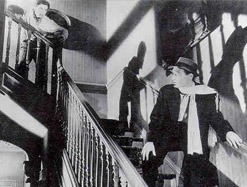
Dana Polan argues that the cultural imperative of wartime America was to promote a sense of community and shared a commitment to a single cause — one nation and one people working together to win the War. The family was inextricably linked to this sense of community and commitment. It was celebrated as the foundation on which community is built as well as the motivation behind the war effort itself. The family was seen as “what ‘we’ are fighting for: the woman in the home, builder of healthy families, prime consumer of products.”8 It was not until after the War that Hollywood felt free — perhaps even obligated — to reassert its independence by revealing the negative side of American society: “[R]ecent work on film noir (especially postwar noir) has read it as a moment of re-relativization of the cinematic institution, its distancing from any simple confirmation of dominant ideological practice.”9
Still, even after the War had ended, American culture — including most Hollywood films — continued to work overtime to support the status quo values of community and family,
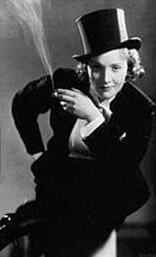
and to prescribe strict gender roles for men and women. Nina Leibman places post-War film noir in the context of a society obsessed with returning women to their “proper place” in the home and converting men from adventurous soldiers to reliable breadwinners. Leibman points to
the dominant social imperative of post-war America with its emphasis on the importance of nuclear family life, the proper role of the sexes, the superiority of suburbia. . . . McCall’s magazine launched an issue on family “togetherness” as the crucial factor in the family enclave. Housewifery became professionalized with a plethora of books and articles extolling the virtues of domesticity and urging women to leave their “Rosie-the-Riveter” jobs for the less tangible rewards of child-rearing and housekeeping. In addition, these articles cautioned both men and women to assume their proper roles lest their aberrant behavior result in untold psychological trauma.10
Describing a later noir film, The Big Heat (1953), Leibman defines the family as “very much constructed along traditional lines: the working father, the helpmate mother, the child who is both nuisance and source of comfort.” 11 It is this image of the “traditional” nuclear family that prescriptive sources such as McCall’s and non-noir Hollywood films held up as an ideal to which all “normal” American men and
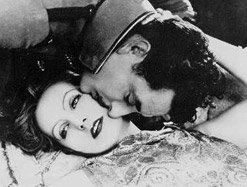
women must aspire. And it is this image of the ideal family and the mass production of that image in American culture (especially classical Hollywood cinema) that film noir calls into question.
Film noir‘s view of the family contrasted not only with the dictates of society at large, but also with the images or myths of family life propagated by other films coming out of Hollywood. These more mainstream films, dating back to the beginnings of large-scale filmmaking in the early 1920s, belonged to the body of films loosely termed classical Hollywood cinema, or CHC. CHC films depicted a very narrow range of acceptable family relationships and rigid gender roles within the family. They also reinforced the dominant culture’s endorsement of the traditional nuclear family as a necessity for successful, “normal” life and the foundation of community and society in general.
The depiction of women in classical Hollywood cinema is especially significant to an understanding of the contrasting images presented in film noir, since both bodies of films express their attitudes toward the family largely through the female characters. Women in CHC films of the 1920s, ’30s, and ’40s seldom ventured outside of their socially prescribed roles as
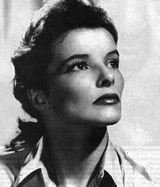
sweethearts, wives, or mothers to the male hero. By providing a romantic interest for the hero, the woman served the function traditionally assigned to her gender (particularly in film) while allowing the male character to play out his own pre-ordained role.12 Women in CHC films were allowed to be heroic only within the boundaries of their proper sphere.13
Meanwhile, by far the most common image of women in classical Hollywood cinema was the wife or mother who was not the heroine, but merely a supporting character for the film’s star.14 Although they may temporarily resist the hero’s advances or oppose his wishes, traditional women seldom are depicted as threatening to or incompatible with the hero, the nuclear family, or the status quo. Instead, they promote the ideal of the traditional family by giving up all resistance to the hero, submitting to male authority, and embracing their proper place in the nuclear family.
Still, classical Hollywood cinema does contain many examples of nontraditional women — women who do not readily accept their place in the nuclear family. These characters generally fall into two categories: the dangerous seductress and the abnormally independent woman. Among the women of CHC films, they come closest to achieving the power and independence of the femmes fatales of film noir, but they are not allowed to keep their independence. Invariably, these women are destroyed, punished, or converted to more traditional roles after learning that their independence was a mistake. Thus, rather than challenging the supremacy of the nuclear family, the nontraditional woman in non-noir films ultimately reinforces the family and traditional womanhood as the only acceptable choice for women.
Greta Garbo and Marlene Dietrich created many of the earliest examples of deadly independent women. Both actresses specialized in playing women who used their sexual attractiveness to ensnare unsuspecting men or otherwise controlled their own sexuality outside of marriage and
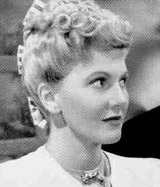
the nuclear family.15 But in all of her movies, Garbo’s character renounced her independence through her love for the hero or made a noble gesture to preserve the family that she had threatened — often just before her death. Similarly, Dietrich’s fallen women are converted to “normal” womanhood or reveal themselves to be soft-hearted, traditional women beneath their heavy makeup.16
Other examples of strong, independent, but non-film noir women include heroines such as Scarlett O’Hara (Vivian Leigh) in Gone with the Wind (1939), the self-reliant career women of 1930s and ’40s comedies, and the overtly “feminist” characters often portrayed by Katharine Hepburn. Yet, these women also stop short of the femme fatale’s total rebellion against the status quo and the social disruption that she creates. Despite her talent for manipulating men, Scarlett O’Hara is no femme fatale; she dedicates her life to one man, and her greatest triumph is restoring and protecting the family home. The cynical, city-wise career women played so often by Jean Arthur, Barbara Stanwyck, and Rosalind Russell usually end up happily married to the hero and cured of their cynicism by the final reel.17 Even Katharine Hepburn’s liberated heroines are chastened for their refusal to embrace traditional womanhood and are forced to “reform” and reassess their values because of their love for the hero.18
Thus, the majority of Hollywood films produced before and during the appearance of film noir use women to communicate an unqualified pro-family message. They reward women who play traditional roles in the nuclear family, punish women who refuse to stay in their proper place and convert or castigate women who openly question the validity of the nuclear family and female gender roles. Above all, these films consistently portray traditional family relationships and women’s place in those relationships as “natural” or “normal” — so much so that even the most independent women cannot resist the family beyond the end of the film.

Be First to Comment